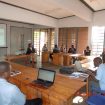Publication: December 2023
The contemporary challenge confronting social protection (SP) systems revolves around the intricate task of meeting the diverse needs of individuals and households. Whether these needs are straightforward or complex, engaging with beneficiaries remains a formidable challenge for existing social programs. The deficiency lies not only in the provision of supply-driven programs but in the absence of mechanisms to facilitate the resolution of individual needs.
The proposed solution recognizes the inadequacies of current SP systems and advocates for a paradigm shift. Rather than solely supporting impoverished and vulnerable households through predetermined programs, the focus shifts to stimulating demand among citizens. The proposal introduces a Single Window Communication System (SWCS) coupled with Linkages & Referrals (L&R) as a comprehensive mechanism to bridge the communication gap between citizens and the SP system.
The heart of the solution lies in actively involving citizens in addressing their unique challenges. The SWCS acts as a centralized platform facilitating communication between individuals and the various institutional actors within the inclusive SP system. This system encourages citizens to actively seek out and choose programs and service providers that align with their specific needs. It moves beyond a passive approach by providing a nudge, information, and guidance to empower individuals in making informed choices.
The SWCS is not just about information dissemination; it incorporates Linkages & Referrals to implement precise and appropriate actions for each individual. This involves understanding individual problems and connecting citizens with suitable solutions, whether from public, private, nonprofit, religious, or other third-party service providers. The proposed mechanism envisions inclusivity by allowing households that are not traditionally classified as poor and vulnerable to participate. It acknowledges that emergencies and disasters can thrust previously stable households into situations of poverty and despair.
Citizens’ interactions with SP programs and service providers are identified as threefold: maintaining eligibility for benefits, addressing individual needs, and obtaining general or specific information. The SWCS, with its rules and protocols tailored to different types of needs, emerges as a dynamic and responsive solution. The proposal suggests a phased implementation of the SWCS, beginning with a region and expanding nationwide after thorough review and adjustments.
In essence, the proposed solution aims to transform the traditional SP approach by actively engaging citizens, stimulating demand, and fostering inclusivity through a dynamic Single Window Communication System linked with precise Linkages & Referrals.





